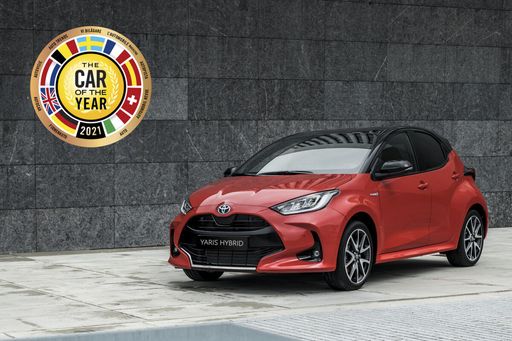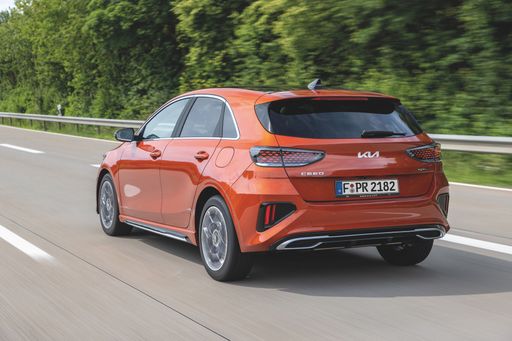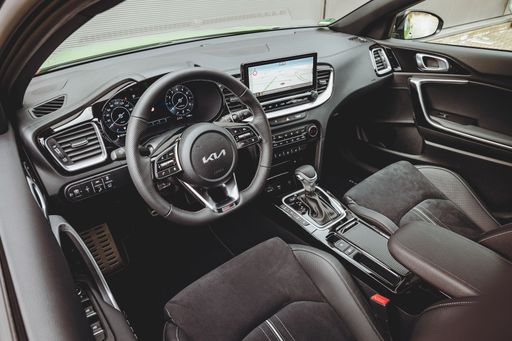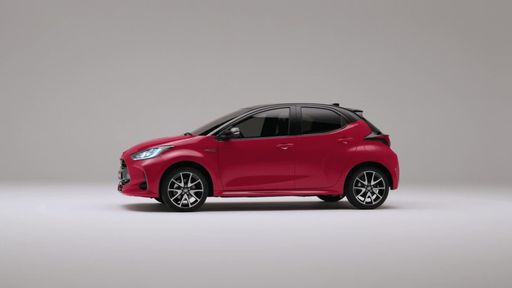Kia Ceed vs Toyota Yaris – Which one offers the better deal?
Everyday use, family trips or long-distance drives – here’s where the differences show.
Discover whether Kia Ceed or Toyota Yaris fits your lifestyle better.
Costs and Efficiency:
Looking at overall running costs, both models reveal some interesting differences in everyday economy.
Toyota Yaris has a barely noticeable advantage in terms of price – it starts at 21900 £, while the Kia Ceed costs 23500 £. That’s a price difference of around 1620 £.
Fuel consumption also shows a difference: Toyota Yaris manages with 3.80 L and is therefore clearly more efficient than the Kia Ceed with 6 L. The difference is about 2.20 L per 100 km.
Engine and Performance:
Power, torque and acceleration are the classic benchmarks for car enthusiasts – and here, some clear differences start to show.
When it comes to engine power, the Toyota Yaris has a convincingly edge – offering 280 HP compared to 140 HP. That’s roughly 140 HP more horsepower.
In acceleration from 0 to 100 km/h, the Toyota Yaris is significantly quicker – completing the sprint in 5.50 s, while the Kia Ceed takes 9.50 s. That’s about 4 s faster.
In terms of top speed, the Toyota Yaris performs slightly better – reaching 230 km/h, while the Kia Ceed tops out at 197 km/h. The difference is around 33 km/h.
There’s also a difference in torque: Toyota Yaris pulls distinct stronger with 390 Nm compared to 253 Nm. That’s about 137 Nm difference.
Space and Everyday Use:
Beyond pure performance, interior space and usability matter most in daily life. This is where you see which car is more practical and versatile.
Both vehicles offer seating for 5 people.
In curb weight, Toyota Yaris is a bit lighter – 1090 kg compared to 1298 kg. The difference is around 208 kg.
In terms of boot space, the Kia Ceed offers clearly perceptible more room – 395 L compared to 286 L. That’s a difference of about 109 L.
In maximum load capacity, the Kia Ceed performs noticeable better – up to 1291 L, which is about 356 L more than the Toyota Yaris.
When it comes to payload, Toyota Yaris barely noticeable takes the win – 525 kg compared to 490 kg. That’s a difference of about 35 kg.
Who wins the race?
The Toyota Yaris proves to be leaves the rival little chance and therefore becomes our DriveDuel Champion!
Toyota Yaris is the better all-rounder in this comparison.
 @ Toyota Motor Corporation
@ Toyota Motor Corporation
Toyota Yaris
Kia Ceed
The Kia Ceed is a sensible, stylish hatchback that gives buyers more than they'd expect for the money, blending practical space with crisp, modern looks. It drives with measured confidence and comes loaded with user-friendly kit, so you can enjoy daily life behind the wheel without breaking into a sweat.
details @ Kia Corporation
@ Kia Corporation
 @ Kia Corporation
@ Kia Corporation
 @ Kia Corporation
@ Kia Corporation
Toyota Yaris
The Toyota Yaris is a sprightly city hatch that packs clever packaging, surprising comfort and fuel-sipping manners into a neat, easy-to-park package. It rewards sensible buyers with low running costs, friendly ergonomics and a forgiving drive, delivered with Japanese reliability and just enough personality to make errands feel a little less ordinary.
details @ Toyota Motor Corporation
@ Toyota Motor Corporation
 @ Toyota Motor Corporation
@ Toyota Motor Corporation
 @ Kia Corporation
@ Kia Corporation
|
 @ Toyota Motor Corporation
@ Toyota Motor Corporation
|
|
|
|
Costs and Consumption |
|
|---|---|
|
Price
23500 - 26300 £
|
Price
21900 - 46700 £
|
|
Consumption L/100km
6 - 6.4 L
|
Consumption L/100km
3.8 - 9.5 L
|
|
Consumption kWh/100km
-
|
Consumption kWh/100km
-
|
|
Electric Range
-
|
Electric Range
-
|
|
Battery Capacity
-
|
Battery Capacity
-
|
|
co2
137 - 146 g/km
|
co2
87 - 215 g/km
|
|
Fuel tank capacity
50 L
|
Fuel tank capacity
36 - 50 L
|
Dimensions and Body |
|
|---|---|
|
Body Type
Hatchback
|
Body Type
Hatchback
|
|
Seats
5
|
Seats
4 - 5
|
|
Doors
5
|
Doors
3 - 5
|
|
Curb weight
1298 - 1372 kg
|
Curb weight
1090 - 1356 kg
|
|
Trunk capacity
357 - 395 L
|
Trunk capacity
141 - 286 L
|
|
Length
4315 mm
|
Length
3940 - 3995 mm
|
|
Width
1800 mm
|
Width
1745 - 1805 mm
|
|
Height
1447 mm
|
Height
1455 - 1500 mm
|
|
Max trunk capacity
1253 - 1291 L
|
Max trunk capacity
935 L
|
|
Payload
478 - 490 kg
|
Payload
289 - 525 kg
|
Engine and Performance |
|
|---|---|
|
Engine Type
Petrol, Petrol MHEV
|
Engine Type
Full Hybrid, Petrol
|
|
Transmission
Manuel, Automatic
|
Transmission
Automatic, Manuel
|
|
Transmission Detail
Manual Gearbox, Dual-Clutch Automatic
|
Transmission Detail
CVT, Manual Gearbox, Automatic Gearbox
|
|
Drive Type
Front-Wheel Drive
|
Drive Type
Front-Wheel Drive, All-Wheel Drive
|
|
Power HP
100 - 140 HP
|
Power HP
116 - 280 HP
|
|
Acceleration 0-100km/h
9.5 - 13.2 s
|
Acceleration 0-100km/h
5.5 - 9.7 s
|
|
Max Speed
178 - 197 km/h
|
Max Speed
175 - 230 km/h
|
|
Torque
172 - 253 Nm
|
Torque
390 Nm
|
|
Number of Cylinders
3 - 4
|
Number of Cylinders
3
|
|
Power kW
74 - 103 kW
|
Power kW
85 - 206 kW
|
|
Engine capacity
998 - 1482 cm3
|
Engine capacity
1490 - 1618 cm3
|
General |
|
|---|---|
|
Model Year
2024
|
Model Year
2024 - 2025
|
|
CO2 Efficiency Class
E
|
CO2 Efficiency Class
B, G
|
|
Brand
Kia
|
Brand
Toyota
|
What drivetrain options does the Kia Ceed have?
The Kia Ceed is available as Front-Wheel Drive.
The prices and data displayed are estimates based on German list prices and may vary by country. This information is not legally binding.
